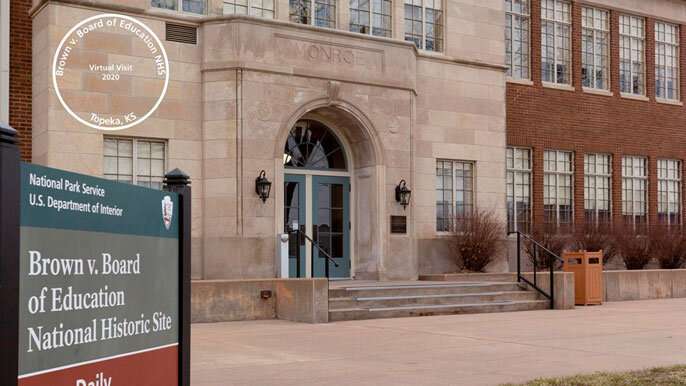Confronting pervasive segregation

As President-elect Joseph R. Biden and Vice President-elect Kamala Harris prepare for a new national administration, the Civil Rights Project at UCLA has issued new research underscoring the grievous segregation of Black students and calling on the new administration to act to fulfill the promise of the landmark Brown v. Board of education ruling as pledged in the Democratic campaign.
Providing an update on the current status of the nation's Black students, the report, "Black Segregation Matters: School Resegregation and Black Educational Opportunity," makes clear that the segregation of Black students has increased in almost every region of the nation and that Black students in many of nation's largest school districts have little access to or interaction with white, Asian or middle-class students. It shows substantial Black enrollment in suburban schools, but high levels of segregation. Several of the nation's largest states, including California, New York and Texas, are among the nation's most segregated in terms of exposure of Black students to their white counterparts.
"Segregation is intense in the education of Black students in 2020 and segregated schools are on average unequal in many of the critical dimensions that create great barriers to equal education," said Gary Orfield, co-director of the Civil Rights Project and co-author of the report. "Our hope is that the Biden administration will move with urgency to implement his campaign's promise to provide incentives for voluntary efforts fostering success in interracial schooling.
The new report details how the national student population is changing and examines the basic patterns of enrollment, segregation and integration across the U.S. The analysis includes enrollment and segregation trends for the past several decades, nationally, by region, community type, and poverty level, and showing the most and least segregated states along multiple measures.
Some of the key findings include:
- The pattern of segregation for Black students has changed and segregation has deepened. At the peak of desegregation in 1988, more than a third of Black students (37 percent) attended schools that had a majority of white students, and in the South, it was 43 percent in majority-white schools. In 2018, it was down to 19 percent nationally, 18 percent in the South and only 14 percent in the West. The trend of Black students in predominately minority schools is increasing and, in 2018, 40 percent of Black students attended intensely segregated (90-100 percent) non-white schools.
- New York is the most segregated state in the country for Black students. The average Black student in New York attends a school with only 15 percent white students and 64 percent of Black students are in intensely segregated schools with 90-100% non-white students. While New York is the most segregated, Illinois, California, and Maryland and others also have extreme segregation levels.
- Black students in the country's largest school districts have little contact with white students except in county-wide or suburban districts. Among the nation's 20 largest school districts, Black students have the least contact with white students in Chicago, followed by Dallas, Miami, and Prince George's County, Maryland, each with an average of less than 4 percent whites. The least segregated of the largest district Is Wake County, North Carolina (metro Raleigh).
The report summarizes recent public opinion research showing that a substantial majority of Blacks believe that white schools provide stronger educational opportunities and favor integration efforts. A Gallup poll published during the presidential primaries in 2019 showed that 68 percent of Blacks, 65 percent of Latinos and 52 percent of whites saw "racial concentration or segregation" as a serious problem. Seventy-five percent of Democrats saw segregation as a serious problem, compared to 35 percent of Republicans. Fifty-three percent of the public favored governmental action to reduce segregation, but 78 percent of Blacks favored the same. When asked about methods to desegregate, 86 percent of Blacks, 88 percent of Latinos and 76 percent of Whites favored magnet schools as a method and there was substantial support for others.
"This new research documents the segregation that Black students face, making clear that in 2020, Black students are locked into schools that perpetuate inequality," said Danielle Jarvie, the senior policy research analyst at the Civil Rights Project and the report's co-author. "It is time for real and significant work to remedy it."
The report's authors urge the Biden administration to build on that public interest and support to address the segregation of Black students. One place to start would be with expansion of the federal Magnet Schools Assistance Grant Program. The report notes that there has been no significant federal program to foster school integration for four decades, in spite of accumulating research on its lifelong benefits.
This September, the House of Representatives passed by a substantial bipartisan majority the Strength in Diversity Act of 2020, offering planning and implementation grants for integration efforts. If enacted, it could be a framework encouraging local efforts, such as regional magnet and transfer programs. The report offers additional suggestions for meaningful efforts to reduce the segregation of Black students.
"Inequality is deeply structured in our schools and in households and communities where many Black families are segregated," concludes Orfield. "In the wake of this summer's Black Lives Matter protests and rising concern about racial injustice, we hope the Biden administration will act a long last to confront pervasive racial segregation and address the needs of Black students."
The Civil Rights Project at UCLA has been closely monitoring educational segregation for the last quarter century. This special report on the segregation of Black students and possible solutions is published in honor of the Black Lives Matter movement.
More information: The report is available online: www.civilrightsproject.ucla.ed … cational-opportunity
Provided by University of California



















